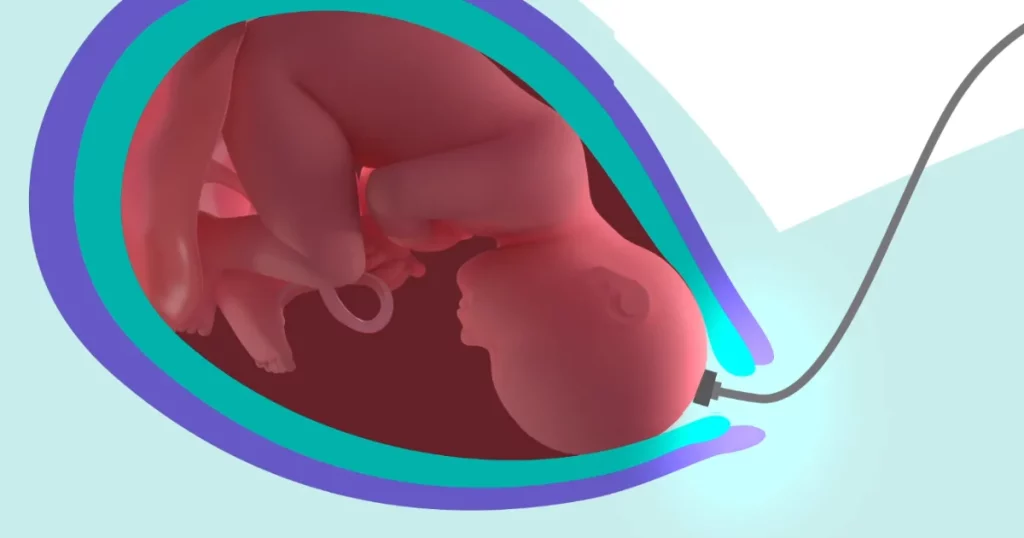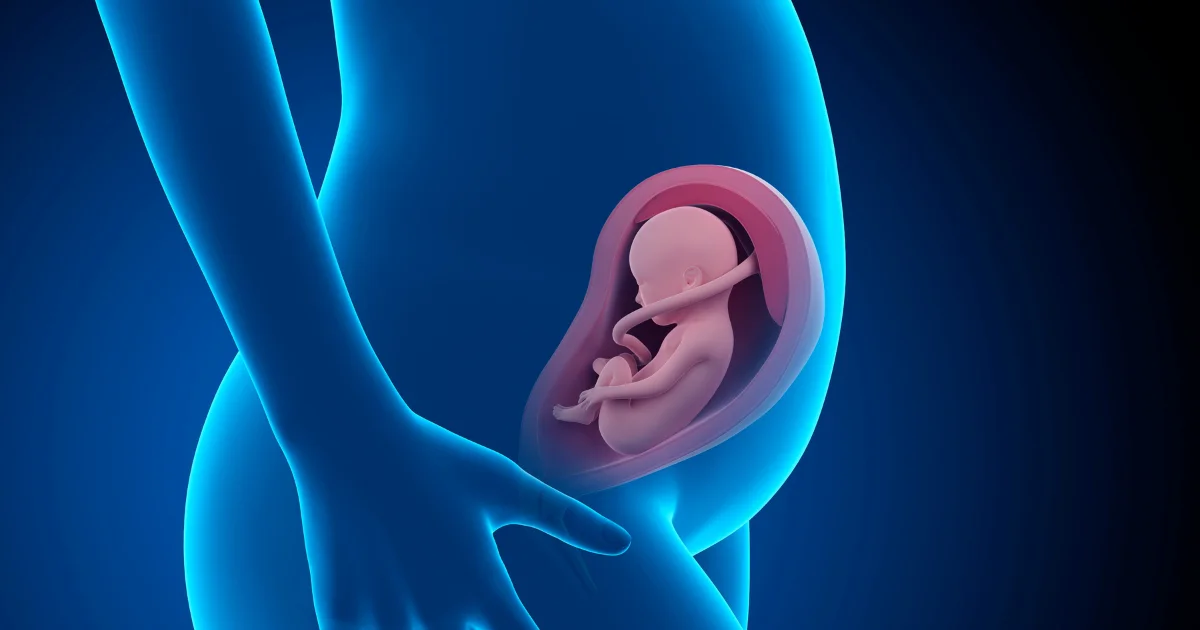Fetal scalp monitoring is a crucial aspect of delivery supervision, providing real-time insights into the well-being of the baby during labor. This deep dive explores the intricacies of fetal scalp monitoring, its significance, and the guidelines for optimal implementation in ensuring a safe and healthy delivery process.
Table of Contents
What is Fetal Scalp Monitoring?
Fetal scalp monitoring is a crucial component of intrapartum care designed to assess the well-being of the fetus during labor. This method involves attaching a small electrode to the baby’s scalp to monitor its heart rate more accurately and provide valuable insights into fetal oxygenation.
Indications for Fetal Scalp Monitoring: When and Why It’s Employed
Fetal scalp monitoring is a specialized technique used in obstetric care to assess the well-being of the fetus during labor. It becomes particularly relevant in certain situations where more precise and direct fetal heart rate monitoring is necessary. Here are the key indications for employing fetal scalp monitoring:
1. Inadequate External Monitoring
When external monitoring methods, such as ultrasound transducers, fail to provide a consistent and clear fetal heart rate signal due to factors like maternal obesity, patient movement, or poor signal quality, fetal scalp monitoring becomes crucial for accurate assessment.
2. Concerns About Fetal Oxygenation
If there are concerns about fetal oxygenation, which may arise due to conditions such as meconium-stained amniotic fluid, suspected fetal distress, or abnormalities in the fetal heart rate pattern, fetal scalp monitoring offers a more direct and reliable evaluation.
3. Assessment of Fetal Acid-Base Status
In situations where there is a need to assess the fetal acid-base status during labor, fetal scalp blood sampling can be performed concurrently with monitoring. This allows healthcare providers to obtain a small blood sample from the baby’s scalp for immediate analysis.
4. High-Risk Pregnancies
Pregnancies with identified high-risk factors, such as maternal medical conditions (diabetes, hypertension), multiple gestations, or known fetal anomalies, may benefit from continuous and direct fetal heart rate monitoring provided by fetal scalp electrodes.
5. Meconium-Stained Amniotic Fluid
The presence of meconium (a baby’s first stool) in the amniotic fluid can indicate fetal distress. Fetal scalp monitoring is often employed to closely monitor the fetal heart rate in cases of meconium staining, helping to detect signs of distress promptly.
6. Non-Reassuring Fetal Heart Rate Patterns
If there are non-reassuring patterns in the external fetal heart rate monitoring, characterized by abnormalities or concerning changes, healthcare providers may opt for fetal scalp monitoring to obtain a more accurate representation of the fetal heart rate.
7. Clinical Decision-Making Requirements
In situations where clinical decisions, such as the need for obstetric interventions like vacuum or forceps delivery, or the consideration of cesarean section, are contingent upon a more precise understanding of the fetal heart rate, fetal scalp monitoring provides the necessary data for informed decision-making.
8. Labor Augmentation or Induction
In cases where labor is being augmented or induced, continuous monitoring of the fetal heart rate through scalp electrodes becomes essential to ensure that the baby is responding appropriately to the increased uterine activity.
9. Pre-existing Fetal Conditions
If there are pre-existing conditions in the fetus that may increase the risk of complications during labor, such as known congenital heart defects or growth restrictions, fetal scalp monitoring offers additional insights into the baby’s well-being.
10. Clinical Judgment in Individual Cases
Ultimately, healthcare providers use their clinical judgment to determine the appropriateness of fetal scalp monitoring based on individual cases, taking into account factors such as the overall health of the mother and fetus, the progression of labor, and any other relevant considerations.
It’s important to note that while fetal scalp monitoring is a valuable tool in specific scenarios, its use is not universal, and healthcare providers carefully consider each case’s unique circumstances to make informed decisions about the most suitable monitoring methods during labor.
Also read: Top 10 Common FAQs of Fetal Monitoring During Pregnancy
Procedure for Fetal Scalp Electrode Placement
Fetal scalp electrode placement is a precise procedure performed by healthcare professionals during labor to obtain direct and continuous monitoring of the fetal heart rate. Here is a step-by-step guide to the procedure:
1. Informed Consent
Obtain informed consent from the patient before proceeding with the procedure. Explain the necessity of fetal scalp electrode placement, the potential benefits, and any associated risks or discomfort.
2. Sterile Preparation
Adhere to strict aseptic technique to maintain a sterile field. This involves washing hands thoroughly, wearing sterile gloves, and preparing the mother’s perineal area with an antiseptic solution.
3. Assessing Cervical Dilatation
Before attempting electrode placement, assess the cervix’s dilatation to ensure that it is sufficiently open to allow safe passage for the electrode.
4. Positioning the Fetal Head
Guided by clinical judgment and external monitoring, position the fetal head to facilitate electrode placement. This may involve the use of gentle maneuvers or waiting for a suitable moment during a contraction.
5. Locating the Fetal Scalp
Use two fingers to locate a suitable area on the fetal scalp, typically at the top of the head. This area should be free from hair and offer a clear view of the scalp for optimal electrode attachment.
6. Preparing the Electrode
Ensure the fetal scalp electrode is sterile and properly connected to the monitoring equipment. The electrode typically consists of a small, insulated wire with a sharp tip designed for easy penetration of the scalp.
7. Electrode Insertion
With gentle but firm pressure, insert the electrode into the previously identified area on the fetal scalp. The sharp tip aids in penetration, and once in place, the electrode should be secured to prevent dislodgment.
8. Confirming Connection
Verify the connection between the electrode and the monitoring equipment. Ensure that the fetal heart rate signal is clear and that any associated data, such as contractions, is accurately recorded.
9. Monitoring and Adjustment
Once the fetal scalp electrode is in place, continue to monitor the fetal heart rate and other relevant parameters. Periodically assess the electrode’s position to ensure it remains securely attached to the fetal scalp.
10. Removal After Delivery
Once the baby is delivered, the fetal scalp electrode is removed. This is typically a straightforward process and does not require any special measures.
It’s essential for healthcare providers to communicate effectively with the laboring woman throughout the procedure, providing reassurance and explaining each step. Continuous assessment and documentation of the fetal heart rate pattern, as well as the mother’s response, are integral parts of fetal scalp electrode placement. The goal is to enhance fetal monitoring accuracy and support timely interventions when necessary.
Continuous Monitoring of Fetal Heart Rate

Continuous fetal scalp monitoring is a specialized method of intrapartum care that involves the continuous assessment of the fetal heart rate (FHR) and, when indicated, the pH of the fetal scalp tissue. This monitoring technique is typically employed during labor and delivery to provide real-time information about the well-being of the baby.
1. Procedure for Fetal Scalp Electrode Placement
- Cervical Examination: Before the electrode placement, a cervical examination is performed to ensure that the cervix is sufficiently dilated.
- Sterile Preparation: The healthcare provider ensures a sterile environment by cleaning the perineal area with an antiseptic solution.
- Fetal Scalp Electrode Insertion: A thin, insulated wire with a small electrode at the end is gently inserted through the cervix and into the birth canal. The electrode is then carefully attached to the baby’s scalp.
- Confirmation of Position: Once the electrode is in place, the healthcare provider confirms its position by observing the fetal heart rate pattern on the monitor.
2. Continuous Monitoring During Contractions
The fetal scalp electrode provides a direct and continuous measurement of the fetal heart rate, allowing for a more accurate assessment of the baby’s response to uterine contractions.
3. pH Sampling (When Indicated)
- In some cases, the healthcare provider may perform intermittent fetal scalp pH sampling during contractions. This involves obtaining a small sample of the baby’s scalp tissue to assess its acid-base balance.
- The pH value provides valuable information about the adequacy of oxygenation and whether the baby is tolerating the stress of labor.
4. Clinical Indications for Fetal Scalp Monitoring
- Inadequate External Monitoring: Fetal scalp monitoring is employed when external monitoring methods, such as Doppler ultrasound or electronic fetal monitoring (EFM), are insufficient or challenging.
- Specific Clinical Concerns: If there are specific concerns about the baby’s well-being, continuous fetal scalp monitoring can offer more detailed insights.
- Assessment of Fetal Response: This monitoring technique is particularly useful for assessing the baby’s response to uterine contractions, especially in situations where precise information is crucial.
Continuous fetal scalp monitoring is a valuable tool in situations where detailed and continuous assessment of the fetal heart rate is essential. It allows for individualized care and timely interventions, contributing to optimal outcomes for both the mother and the baby during the birthing process.
Interpretation of Fetal Scalp Monitoring
Proper interpretation of the monitoring data is essential for timely decision-making and ensuring the best outcomes for both the mother and the infant.
A. Key Parameters of Interpretation
1. Fetal Heart Rate (FHR)
- Normal Baseline: A baseline FHR within the range of 110 to 160 beats per minute (bpm) is considered normal.
- Variability: Normal fluctuations in the FHR pattern, known as variability, indicate a healthy nervous system. Reduced or absent variability may warrant further evaluation.
2. Decelerations
- Early Decelerations: Gradual decreases in FHR that mirror uterine contractions and typically indicate head compression, a normal response.
- Late Decelerations: FHR decreases that occur after the peak of a contraction and may indicate uteroplacental insufficiency, requiring close monitoring.
3. Accelerations
Accelerations are transient increases in FHR and are generally a reassuring sign, suggesting fetal well-being.
4. Prolonged Decelerations
Prolonged decreases in FHR lasting more than two minutes may signal potential issues and require prompt evaluation.
B. Interpretation Guidelines
1. Reassuring Patterns: A reassuring FHR pattern includes a normal baseline, appropriate variability, and the presence of accelerations.
2. Non-Reassuring Patterns: Patterns such as reduced variability, late or variable decelerations, or prolonged decelerations may be non-reassuring and require further assessment.
3. Additional Assessments: The healthcare provider may perform fetal scalp pH sampling to assess acid-base balance and oxygenation if there are concerns about fetal well-being.
4. Clinical Correlation: Interpretation should be done in the context of the overall clinical picture, considering factors such as maternal condition, uterine contractions, and fetal response.
C. Communication and Decision-Making
1. Clear Communication: Effective communication between healthcare providers and the laboring woman is crucial. Any changes in the monitoring pattern, concerns, or interventions are clearly communicated.
2. Informed Decision-Making: Informed consent is obtained before initiating fetal scalp monitoring, and the laboring woman is actively involved in decision-making regarding her care.
D. Interventions Based on Interpretation
1. Position Changes: Changing the mother’s position may alleviate pressure on the baby and improve the FHR pattern.
2. Fluid Administration: Intravenous fluids may be administered to optimize maternal blood volume and improve uterine perfusion.
3. Oxygen Administration: Supplemental oxygen may be provided to the mother to enhance fetal oxygenation.
4. Invasive Monitoring or Intervention: If the FHR pattern remains non-reassuring, additional interventions, such as fetal blood sampling or emergency cesarean section, may be considered.
Interpretation of fetal scalp monitoring requires a comprehensive understanding of fetal physiology, clinical correlation, and effective communication. Continuous vigilance and prompt intervention based on accurate interpretation contribute to safe and optimal outcomes during labor and delivery.
Benefits of Fetal Scalp Monitoring
Fetal scalp monitoring offers several benefits that contribute to effective monitoring and timely decision-making, ensuring the safety of both the mother and the infant.
1. Real-Time Assessment
Fetal scalp monitoring provides real-time data on the fetal heart rate (FHR) during contractions, allowing healthcare providers to promptly identify and respond to changes in the baby’s well-being.
2. Accurate Fetal Heart Rate Monitoring
By attaching a fetal scalp electrode directly to the baby’s scalp, healthcare providers obtain a more accurate and direct measurement of the FHR compared to external monitoring methods.
3. Response to Uterine Contractions
Fetal scalp monitoring enables the assessment of the baby’s response to uterine contractions, helping to identify patterns such as accelerations, early decelerations, and late decelerations.
4. Identification of Fetal Distress
Continuous monitoring allows for the timely detection of signs of fetal distress, such as abnormal FHR patterns or persistent decelerations, prompting prompt intervention to address potential issues.
5. Assessment of Oxygenation
Fetal scalp pH sampling, often performed in conjunction with monitoring, provides information about the baby’s acid-base balance, offering insights into oxygenation levels and potential hypoxia.
6. Reduced Ambiguity in FHR Patterns
The direct measurement of the FHR from the fetal scalp electrode reduces ambiguity in monitoring, providing clearer and more reliable data for interpretation.
7. Adaptability to High-Risk Pregnancies
Fetal scalp monitoring is particularly beneficial in high-risk pregnancies where continuous and precise assessment of the baby’s well-being is essential for making informed decisions about interventions.
8. Facilitation of Interventions
Fetal scalp monitoring guides healthcare providers in determining appropriate interventions to address non-reassuring FHR patterns, such as changes in maternal position, oxygen administration, or more invasive measures if necessary.
While fetal scalp monitoring is a valuable tool, its use is tailored to specific clinical situations, and the benefits must be weighed against potential risks. As part of comprehensive intrapartum care, fetal scalp monitoring enhances the ability of healthcare providers to ensure the well-being of both the mother and the baby throughout the labor process.
Considerations and Contraindications
Fetal scalp monitoring application requires careful consideration of various factors to ensure its appropriateness and safety. Additionally, there are certain situations where fetal scalp monitoring may be contraindicated due to potential risks. Here are key considerations and contraindications associated with fetal scalp monitoring:
A. Considerations
1. Maternal Cooperation: The willingness and cooperation of the laboring woman are essential for the successful implementation of fetal scalp monitoring. Adequate communication and obtaining informed consent are crucial aspects.
2. Ruptured Membranes: Fetal scalp monitoring is typically performed after the membranes have ruptured, allowing access to the baby’s scalp. The absence of intact membranes is a consideration for the feasibility of this monitoring method.
3. Cervical Dilatation: Adequate cervical dilatation is necessary to safely perform fetal scalp electrode placement. Healthcare providers assess the progress of labor and the readiness for the procedure based on cervical examination.
4. Low-Risk Situations: Fetal scalp monitoring is often reserved for situations where there is a need for more detailed and continuous assessment of the fetal heart rate. In low-risk pregnancies, alternative methods of monitoring may be considered.
5. Clinical Indications: Fetal scalp monitoring is typically employed in situations where there are concerns about fetal well-being, such as non-reassuring fetal heart rate patterns detected through external monitoring.
6. Skilled Healthcare Providers: The procedure requires skilled healthcare providers who are trained in the correct placement of the fetal scalp electrode and the interpretation of monitoring data.
B. Contraindications
1. Unruptured Membranes: Fetal scalp monitoring is contraindicated when the amniotic membranes are intact, as it necessitates access to the baby’s scalp, which is only possible after membrane rupture.
2. Infections: Active maternal infections, particularly those involving the genital tract, are considered contraindications due to the risk of introducing bacteria during the electrode placement.
3. Breech Presentation: In cases of breech presentation, fetal scalp monitoring may be challenging to perform accurately, and alternative monitoring methods are often considered.
4. Certain Medical Conditions: Maternal medical conditions, such as bloodborne infections, may be contraindications to fetal scalp monitoring due to potential transmission risks.
5. Certain Pregnancy Complications: Certain complications, such as a known fetal anomaly or conditions that make the monitoring procedure impractical or unsafe, may contraindicate the use of fetal scalp monitoring.
6. Poor Fetal Positioning: Difficulties in accessing the fetal scalp due to poor positioning or engagement may limit the feasibility of fetal scalp monitoring.
7. Allergies or Sensitivities: Known allergies or sensitivities to materials used in the monitoring procedure, such as latex, may be considered contraindications.
8. Patient Refusal: If the laboring woman refuses or is unable to provide informed consent for fetal scalp monitoring, it is contraindicated.
In all cases, the decision to use fetal scalp monitoring involves a careful assessment of the individual clinical situation, weighing the potential benefits against the risks. It is essential for healthcare providers to communicate effectively with the laboring woman, ensuring that she is informed and involved in the decision-making process regarding fetal monitoring methods.
Continuous Surveillance and Documentation
Continuous surveillance and documentation are crucial components of fetal monitoring during labor. These practices are essential for assessing the well-being of both the mother and the baby, ensuring timely intervention if complications arise, and maintaining a comprehensive record of the labor process. Here’s an overview of the importance of continuous surveillance and documentation in fetal monitoring:
A. Continuous Surveillance
1. Real-Time Monitoring: Fetal monitoring involves the real-time assessment of the fetal heart rate (FHR) and uterine contractions. This continuous surveillance allows healthcare providers to promptly identify changes or abnormalities in the fetal heart rate pattern.
2. Early Detection of Issues: Continuous monitoring facilitates the early detection of non-reassuring FHR patterns, signs of fetal distress, or abnormalities in uterine contractions. Early identification enables timely interventions to address potential issues.
3. Dynamic Response to Changes: The dynamic nature of continuous surveillance enables healthcare providers to respond promptly to fluctuations in the fetal heart rate, ensuring that appropriate actions are taken to optimize fetal well-being.
4. Adaptation to Labor Progression: Continuous surveillance adapts to the various stages of labor, allowing healthcare providers to consider the evolving dynamics and adjust interventions accordingly.
B. Documentation
1. Record Keeping: Accurate and detailed documentation is essential throughout labor. This includes recording baseline fetal heart rate, variations, accelerations, decelerations, and the timing and intensity of uterine contractions.
2. Timing of Interventions: Documentation helps in recording the timing of interventions, such as changes in maternal position, administration of medications, or any medical procedures performed during labor.
3. Legal and Ethical Considerations: Comprehensive documentation is crucial for legal and ethical reasons. It provides a detailed account of the care provided, which is essential in case of any complications or disputes.
4. Quality Assurance: Documentation contributes to quality assurance by allowing for retrospective analysis of the labor process. It helps healthcare institutions and professionals assess the effectiveness of interventions and make improvements if needed.
6. Patient Education: Documentation serves as a valuable tool for patient education. It allows healthcare providers to share information with the laboring woman about the progress of labor, interventions performed, and the well-being of the baby.
Continuous surveillance and documentation in fetal monitoring are integral to the delivery of safe and effective care. They provide a comprehensive record of the labor journey, supporting evidence-based decision-making and ensuring that the healthcare team can respond promptly to the needs of both the mother and the baby.
Post-Monitoring Care

Post-monitoring care is a crucial aspect of the overall care provided to both the mother and the newborn following fetal monitoring during labor. This phase involves specific actions and considerations aimed at ensuring the well-being of both patients. Here’s an overview of post-monitoring care in fetal monitoring:
A. Maternal Care
1. Recovery and Comfort: After continuous fetal monitoring, the mother may need time to recover from the physical demands of labor. Ensuring her comfort and addressing any immediate post-labor discomfort or pain is a priority.
2. Emotional Support: Labor and delivery can be emotionally taxing. Providing emotional support and reassurance to the mother is essential during the post-monitoring period. Clear communication about the labor process and the well-being of the baby contributes to a positive experience.
3. Monitoring Vital Signs: Continuous monitoring of maternal vital signs, such as blood pressure and heart rate, is important in the post-labor phase. Any signs of postpartum complications or abnormalities should be promptly addressed.
4. Postpartum Assessment: A comprehensive postpartum assessment includes evaluating uterine contractions, assessing the amount and characteristics of postpartum bleeding (lochia), and ensuring the uterus is contracting appropriately.
5. Pain Management: Adequate pain management is crucial in the post-monitoring period. The healthcare team should assess the mother’s pain levels and provide appropriate pain relief measures, whether through medications or non-pharmacological methods.
B. Newborn Care
1. Immediate Assessment: Immediate post-monitoring care involves assessing the newborn’s overall condition. This includes evaluating the baby’s respiratory effort, heart rate, muscle tone, reflexes, and color.
2. Skin-to-Skin Contact: Encouraging skin-to-skin contact between the mother and the newborn is beneficial for bonding and helps regulate the baby’s temperature and heart rate.
3. Initial Feeding: If the mother chooses to breastfeed, initiating breastfeeding in the immediate post-monitoring period is encouraged. The healthcare team can provide guidance and support for successful breastfeeding.
4. Monitoring Vital Signs: Continuous monitoring of the newborn’s vital signs, including heart rate and oxygen saturation, ensures early detection of any potential issues and allows for timely intervention.
5. Documentation: Accurate and thorough documentation of the newborn’s condition and the events during the post-monitoring phase is essential for comprehensive and seamless care. This includes recording Apgar scores and any interventions provided.
C. Patient Education
1. Postpartum Instructions: Providing clear and concise postpartum instructions to the mother is crucial. This includes guidance on self-care, recognizing signs of complications, and scheduling follow-up appointments.
2. Newborn Care Guidance: Educating parents about newborn care, including feeding, diapering, and recognizing signs of well-being or distress, is an integral part of post-monitoring care.
Post-monitoring care is a collaborative effort involving the healthcare team, the mother, and her support system. By addressing the physical and emotional needs of both the mother and the newborn, post-monitoring care contributes to a positive postpartum experience and lays the foundation for ongoing maternal and infant well-being.
Final Words
This deep dive into fetal scalp monitoring emphasizes its pivotal role in delivery supervision. By understanding its indications, procedures, and interpretation, healthcare providers can utilize this technique effectively, contributing to the overall safety and well-being of both the mother and the baby during the labor and delivery process.




